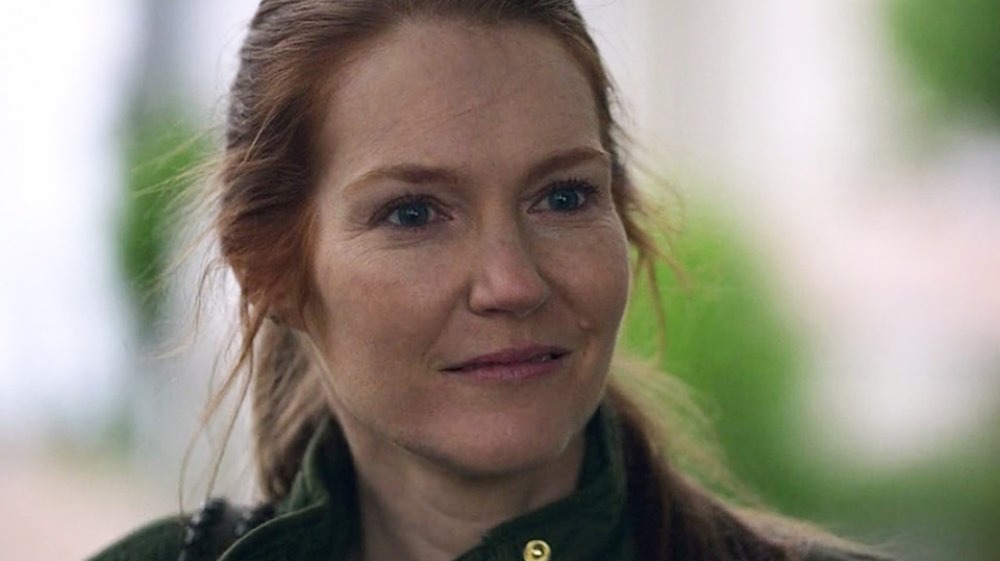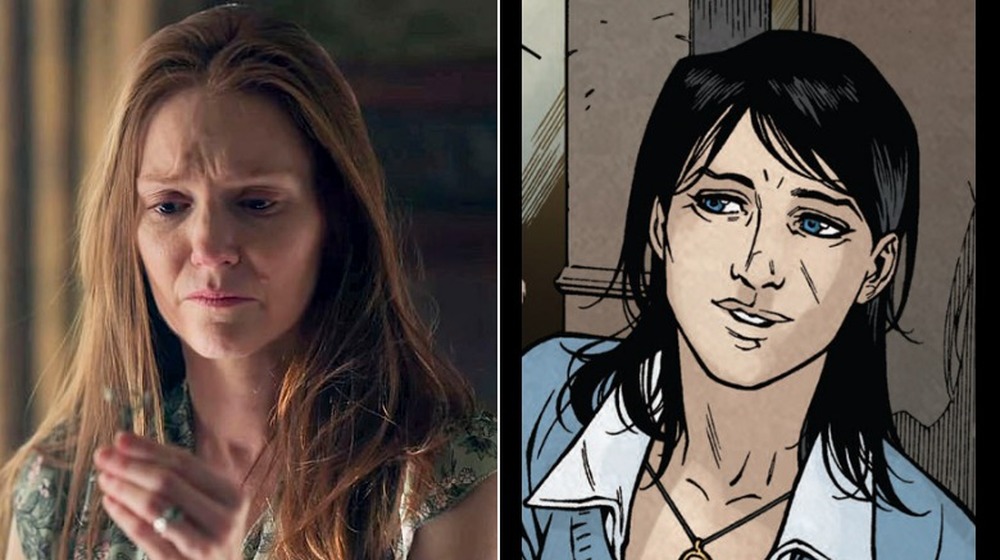How Netflix Changed The Mother From Locke & Key
While Netflix prepares our return trip to Keyhouse for a sophomore season of their hit comic book adaptation Locke & Key, it's worth revisiting an initial set of episodes so rich in mythology and worldbuilding that details are still being unearthed — even months after the series' debut.
The popular sci-fi show adapts Joe Hill's landmark series of comics from indie press IDW Publishing, and though the DNA of Hill's Lovecraft is obviously present on screen, quite a few details have shifted in the translation. Aside from the setting's name change (an aesthetic update to sidestep some of the recent criticism of H.P. Lovecraft's vaunted place in genre history), Netflix's Keyhouse contains many important differences from Hill's — including some new magical keys. Even the characters, largely lifted from the pages of the streaming series' source material, have taken on new lives with their new medium.
The core Locke family looks very similar to the version we first met in Hill's "Welcome to Lovecraft," the first volume of Locke & Key, but their TV counterparts all exhibit traits and behaviors unique to the TV version — none more so than family matriarch and central widow, Nina Locke (Darby Stanchfield).
Here's how Netflix changed the mother to suit a new vision for Locke & Key.
Comic book Nina Locke isn't in recovery
Nina Locke is widowed in the earliest panels of Locke & Key when her husband, Rendell Locke (Bill Heck), is shot by troubled student Sam Lesser. On the show, she relocates her three traumatized kiddos from Washington to Massachusetts to live in their deceased father's ancestral home. Enter: Keyhouse, and the family secret of the magical keys and the Whispering Iron from which they are wrought.
At first glance, the TV series' Nina certainly looks different. Nina from the comics is a dark beauty with raven hair, bright blue eyes, and a fierce temper. Darby Stanchfield is a strawberry blond, with a decidedly less acerbic demeanor than her inspiration. The differences between the two versions of the same character go even deeper, however. In both tellings, Nina is an alcoholic struggling with recovery — though TV Nina is in a much better place than her progenitor. Comics Nina falls way off the wagon after her husband's death, and spends most of the series hitting the sauce pretty hard and taking it out on her children. TV Nina, on the other hand, seems to have her addiction under control — at least at this point. We meet her six years into her sobriety, and she exhibits much more emotional constancy than her pencil-and-ink counterpart, as a result. As a result, her season 1 relapse hits all the harder.
This important change will likely accrue to Nina's benefit over the course of the series, as it makes her an even more sympathetic character than she is in the comics and provides extra space for her to grow as the seasons wear on.
Look for Nina Locke's next chapter when Locke & Key returns to Netflix for season 2 in 2021.

